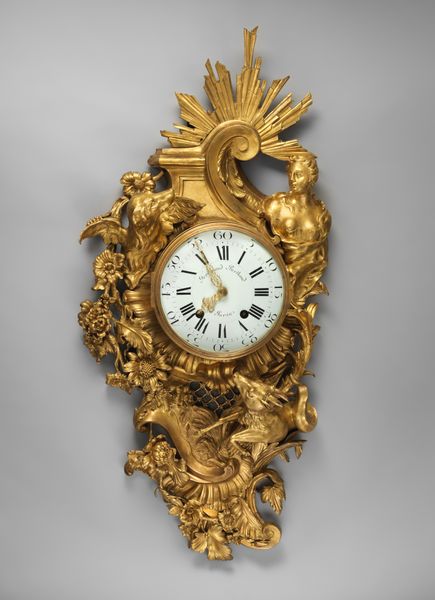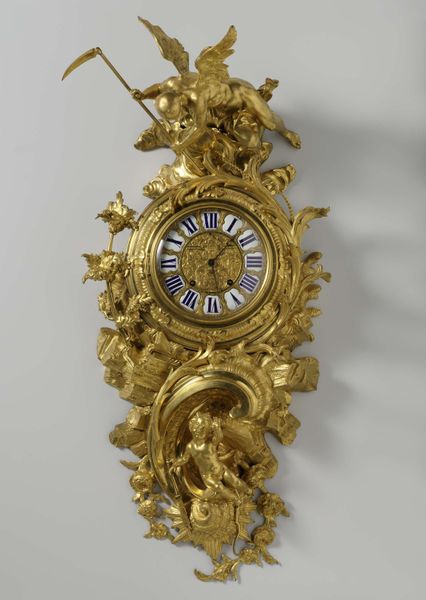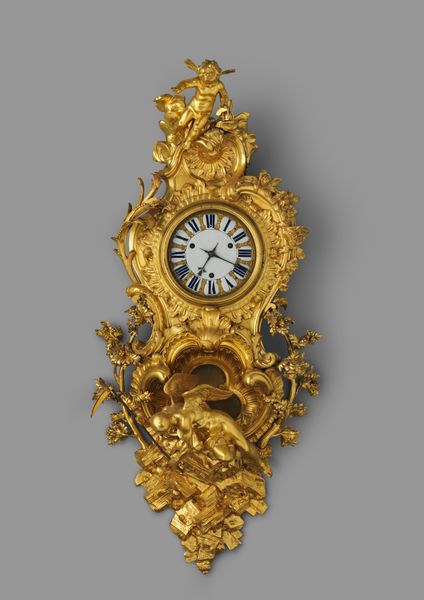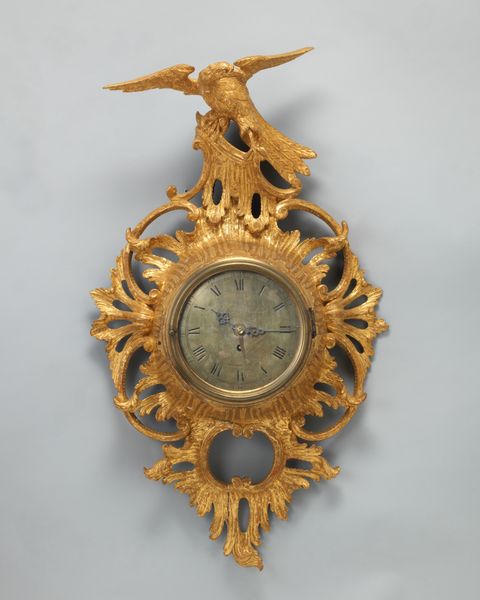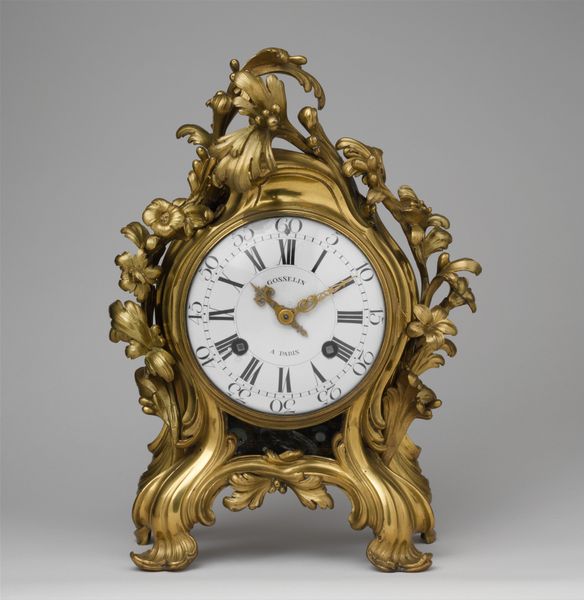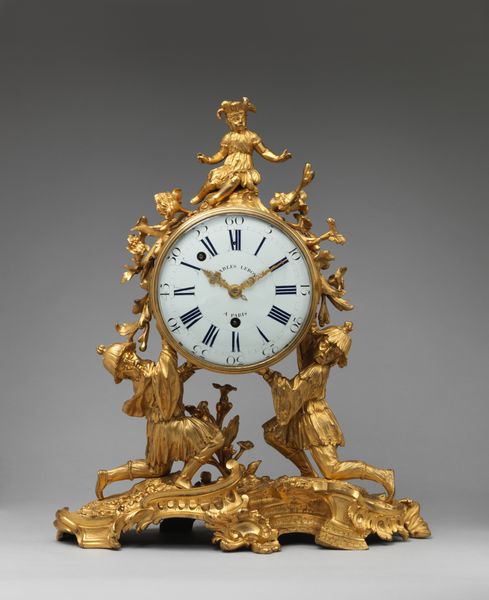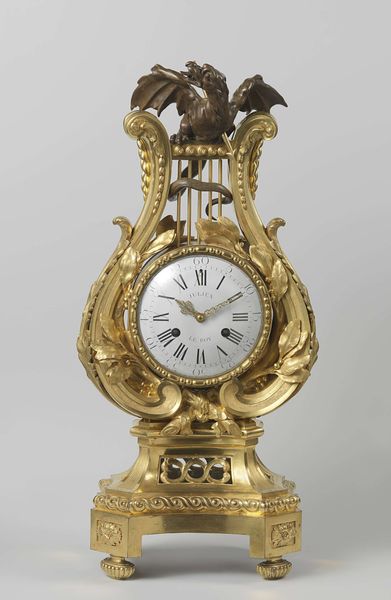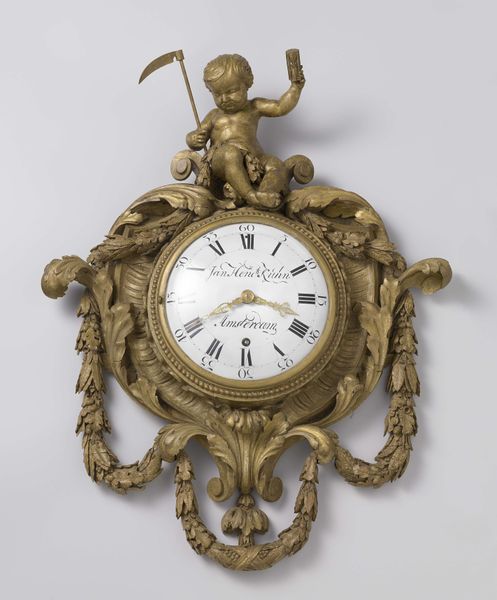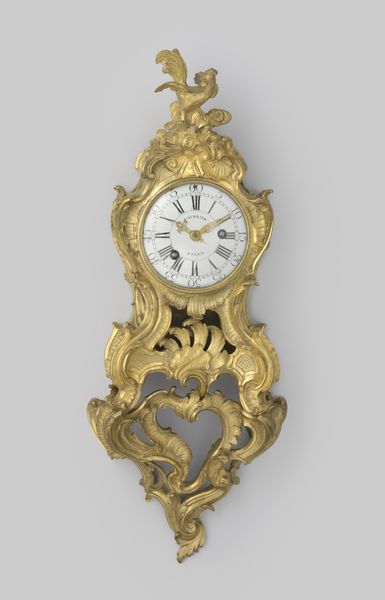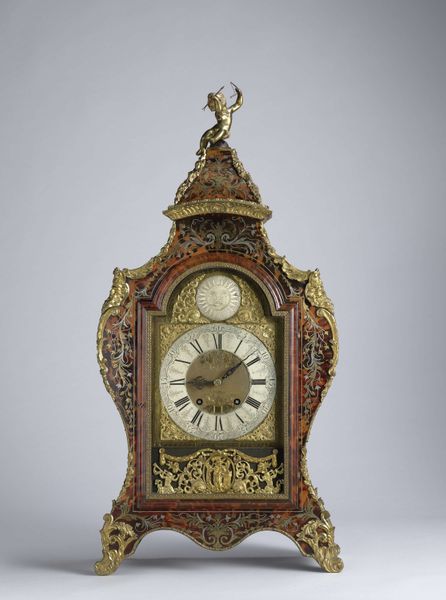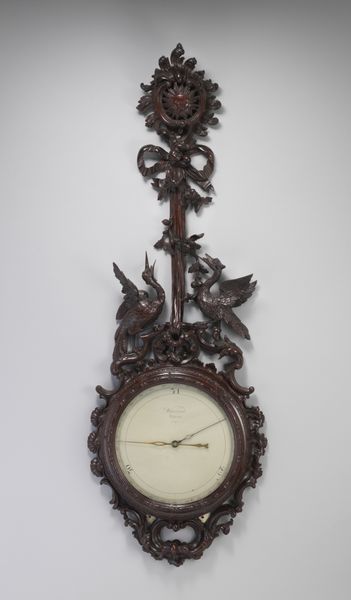
carving, guilding, glass, sculpture, wood
#
ornate
#
carving
#
furniture
#
guilding
#
glass
#
england
#
sculpture
#
wood
#
decorative-art
#
rococo
Dimensions: 102.5 × 46.2 × 17.4 cm (40 3/8 × 18 3/16 × 6 7/8 in.)
Copyright: Public Domain
Curator: Good morning, everyone. We are looking at an ornate, rococo wall clock dating from about 1750, an object made in England. It's attributed to Thomas Johnson. Editor: My first impression is how relentlessly decorative it is! The gilded wood is intensely carved. Is that figure at the top playing the flute? The material ornamentation absolutely overwhelms function here, I think. Curator: Precisely. It embodies the decorative excess of the Rococo. Think of the court of Louis XV—the emphasis on the pastoral, pleasure, and escapism through ornamentation. Notice how the figure does, indeed, top an arrangement of carved foliage, flowers, and asymmetrical scrolls. These represent abundance and natural beauty. Editor: And this aesthetic sensibility extended to these everyday objects! Who was producing such a clock, though, and for whom? How were these decorative elements affixed, what types of wood were involved in carving and support? How were glass and gilding utilized? It seems so inextricably tied to display and a consumer class with leisure time. Curator: It's critical to consider the broader social picture. Rococo was a statement of elite identity. As the wealth accumulated through imperial trade and colonial exploitation expanded, this type of lavish item, carved wood enhanced with guilding and glass, would signal social status within a strict hierarchy. So, not only a signifier of time, but also an emblem of a highly restrictive society that benefited a tiny, overwhelmingly white demographic. Editor: Yes, there's the labor involved to transform those raw materials into this status marker! Wood wasn't just lying around in neat sculptural arrangements...it had to be quarried, planed, shaped. And we must consider how this affected larger artistic production: does it marginalize female labor or craft knowledge in contrast with high-status artistic production of its time? Curator: Those power dynamics are inescapable when considering pieces from this era. Thank you for joining me as we examined both social context and modes of production connected to Johnson's wall clock! Editor: Absolutely. It helps me to see this level of crafted material ornamentation not only as decorative exuberance but rather the tip of a global, extremely unjust societal arrangement. Thank you.
Comments
No comments
Be the first to comment and join the conversation on the ultimate creative platform.
